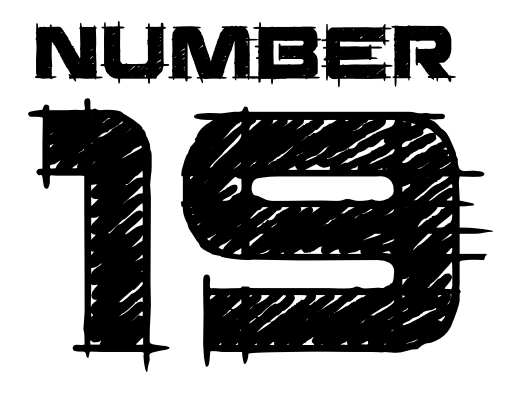
Technology Moves Fast; Ecosystems Don’t
Technology moves fast. Ecosystems don’t. I’ve seen cards evolve from simple magstripe to chip and then beyond, but the underlying flows of authorisation and settlement have barely changed – only the data has grown. That’s why my focus is on helping clients see past the buzzwords to the structures that really matter.
Seeing Beyond the Buzzwords
After many years in payments and security, I’ve worked across banks, retailers, networks, and regulators, helping them navigate waves of change that often looked revolutionary on the surface but were, in reality, new building blocks on old foundations. That perspective – the ability to distinguish between what’s genuinely transformative and what’s simply rebranded technology – is what my clients rely on. It means I can give them clarity in a landscape that all too often feels overcomplicated, and direction when they need to know which changes truly matter.
Reimagining the Logic: PayPoint
One of my earliest challenges was designing and building PayPoint – a service that would allow utility customers to pay their utility bills in cash at the local shop. At first glance, it looked different: money wasn’t coming from the customer’s account to pay the merchant for what the customer was buying, it was traveling in the opposite direction, it was being collected from the customer and then passed from the merchant to the utility.
But what struck me was how much it still resembled the card payment ecosystem I already knew. Even though everything was backwards, the same principles of authorisation, data capture, and settlement applied – we just needed to reimagine the logic and then tweak and reconfigure the processes. I built the system around standard service technologies, tweaking them to perform fundamentally different tasks. That project taught me two things I’ve carried ever since: first, that the logic of payment ecosystems is remarkably adaptable; and second, that innovation is often less about tearing everything up, and more about seeing how existing rails can be bent into new shapes.
Scaling Change: Halifax Chip & PIN
Another milestone in my career was leading the Chip & PIN project at the Halifax, where we delivered 12.5 million cards to existing and new current account customers. On the surface, it might have looked like a straightforward migration from magstripe to EMV, but in reality, it meant reengineering every part of the card payment process – and Chip & PIN was new, and no one had ever done a migration of this size before.
The existing magstripe logic was sound, but EMV added something new! Whilst the overall end-to-end flows – authorisation, clearing, settlement – remained intact, every link in the chain had to be re-engineered and rebuilt, which meant rethinking card issuing and replacement systems, PIN change processes, ATM operations, and adding the ability to authenticate cryptograms in real time during authorisation.
What I learned from that project was that large-scale change in payments rarely comes from replacing the underlying logic; large-scale change comes from adapting infrastructure so it can carry the extra weight of new demands. For Halifax, the shift to Chip & PIN wasn’t just about security, it was about giving millions of customers confidence in a new way of paying, whilst ensuring the bank’s systems could deliver that reliability at scale. It’s the kind of balance between technical precision and customer trust that I’ve been focused on ever since.
When Models don’t Fit: Open Banking in Retail
More recently, I’ve been asked about Open Banking as a retail payment solution. On the surface, it promises a revolution: direct account-to-account payments that bypass the card networks entirely, and it’s cheap! But after a long time in this industry, I can say with conviction that Open Banking doesn’t fit the established retail payment logic – it was never meant to – and that’s why I believe it will struggle to succeed.
Retail payments have always been built around a consistent model, a logically simple ecosystem that establishes a link between two unrelated parties for the duration of a transaction, which is then dropped. This logic has held true from zip-zap, through magstripe and on to chip, and it’s the same model for ATMs. Open Banking, however, is different. It is designed to facilitate individually settled account-to-account payments – it is not designed for retail payments that are settled in bulk. The Open Banking industry is trying to graft Open Banking payments onto an infrastructure that was never designed for it, and in doing so it breaks the principles of Open Banking and the ecosystemic flows that make retail payments work.
I’ve yet to see a convincing argument in support of Open Banking in retail payments. What I do see are clients grappling with complexity, regulators pushing for adoption, and a market uncertain about whether customers will ever embrace it. My role is to cut through the noise: to explain why this model diverges from the tried and tested logic, what risks it creates, and what alternatives might actually deliver on the promise of faster, cheaper, more reliable payments.
The Thread that Ties it All Together
What ties these experiences together is a way of thinking: I always look for the underlying logic. Payments technology will keep changing – magstripe, chip, biometrics, APIs – but the structures that work are always the ones that respect the ecosystem. My role is to help clients see the difference between true innovation and misplaced enthusiasm, between infrastructure that can scale and ideas that will struggle to take root.
Clarity over Complexity
I don’t just bring technical knowledge; I bring perspective. I’ve built services from scratch, delivered change at massive scale, and challenged models that don’t fit the logic. For my clients, that means clarity where others create jargon, and direction where the landscape feels uncertain. In practice, it means strategies that actually work, systems that deliver, and customers who trust the outcome.
Today, I help clients make sense of payments and security at a time when the noise has never been louder. The industry is full of buzzwords, new entrants, and regulatory shifts, but the fundamentals haven’t changed. My value is in showing which changes matter, which don’t, and how to respond in ways that deliver clarity, resilience, and customer trust.
I draw on decades of experience across banks, retailers, networks, and regulators, but I’m not stuck in the past. I spend my time analysing where the industry is going, writing about the forces reshaping it, and advise clients on how to separate enduring logic from passing fashions.
For clients, that means having a partner who can:
- translate complex systems into clear strategies,
- identify risks before they become problems,
- challenge hype with evidence, and
- shape solutions that will still work five years from now.
Whether you’re building services, refining strategy, or just trying to understand what’s really happening in payments, my role is to give you the perspective, clarity, and confidence to act.
I’ve seen payments transform many times – from paper vouchers to magstripe, from chip to contactless, and now into the digital and data-driven era. With each wave comes noise, disruption, and uncertainty, but what hasn’t changed is the need for people who can make sense of complexity and turn it into practical outcomes.
Looking Ahead: Ecosystems Endure
The next chapter is already unfolding: real-time settlement, digital identity, cross-border integration, and new regulatory frameworks. No one knows exactly how these will play out, but what I do know is this – ecosystems endure, and the organisations that succeed will be the ones that adapt their strategies to fit that enduring logic.
That’s where I come in. My focus is on helping clients navigate the turbulence, cut through the buzzwords, and build systems and strategies that actually work in practice. The tools will change, the flows will evolve, but the need for clarity, trust, and resilience will remain the same – and that’s what I bring.

